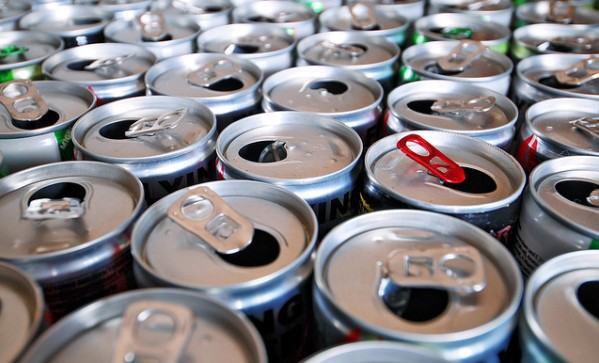It’s near-impossible to remember what Western society was like before the energy drink. Red Bull was created a mere 24 years ago, but it seems like the practice of drinking canned caffeine, taurine, guarana, and/or a ton of liquid sugar has always been with us. Everything has an origin, though, heart-palpitating beverages included. Let’s follow the timeline and examine a brief history of the energy drink.
IRN-BRU
Barr’s IRON BREW launched in 1901 in Scotland and is considered the first manufactured energy drink. The popular soft beverage, which contains a small amount of iron, currently sells neck-and-neck with Coca-Cola in Scotland. Also like Coke, only a few people in the world know its signature recipe.
Lucozade
Newcastle chemist William Owen created Lucozade in 1927 to provide a source of energy to those recovering from common colds or influenza. In the early 1980s, by way of escaping knee-jerk association with illness (despite being distributed by pharmaceutical giant GlaxoSmithKline), the drink’s slogan was switched from “Lucozade aids recovery” to “Lucozade replaces lost energy.” The re-branding effort tripled Lucozade’s sales in five years and the energy beverage remains extremely popular in Britain.
Lipovitan D
Japanese pharmaceutical company Taisho created Lipovitan in 1962 as a way to help nightshift workers stay alert. Little brown bottles of Lipovitan D (Drink) are marketed as Livita or Libogen in many English-speaking nations, and the taurine-based drink served as (at least) half the blueprint for Red Bull.
Krating Daeng
Austrian entrepreneur Dietrich Mateschitz visited Thailand in 1982 and discovered Krating Daeng — a popular energy beverage among Thai truck drivers, factory workers, and farmers — worked great for alleviating his jetlag. The “Thai Red Bull” recipe is a hybrid of Lipovitan and Bacchus F, a South Korean drink. Mateschitz developed Krating Daeng’s formula with T.C. Pharmaceuticals to accommodate the Western flavour palette and in 1987, Red Bull was born. Innovation was key for Mateschitz, but so was timing. Throughout the mid-1980s and early-’90s, the excessively caffeinated Jolt Cola created a new market for carbonated energy beverages — it became popular with North American college students and young professionals seeking an energy “buzz.”
What juice-free drinks get you “juiced”? Share your recommendations (and warnings) in the Comments!
——————–
Image courtesy of Tambako the Jaguar.


